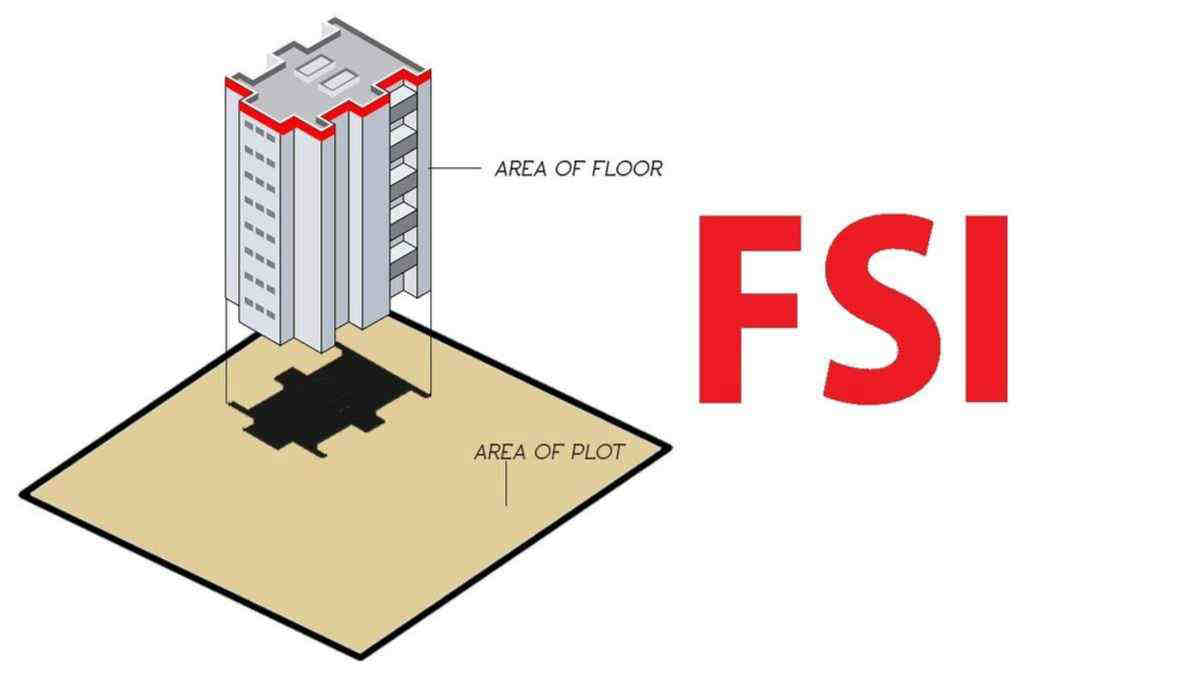With Maharashtra’s real estate landscape evolving rapidly, understanding the latest FSI (Floor Space Index) regulations is vital for homeowners, developers, and investors alike. Whether you are planning a redevelopment project in Mumbai, scouting
for investment opportunities in Pune, or calculating potential built-up area using an FSI calculator in Mumbai, this blog will serve as your complete guide to navigating the new FSI rules in Maharashtra 2025.
In this detailed blog, we break down FSI fundamentals, the impact of road width FSI in Mumbai, city-wise changes, premium FSI rates in Mumbai, fungible FSI calculations, and everything in between.
Also Read:- Home Foundation Types: What Every Buyer and Builder Should Know
What Is FSI and Why Is It Crucial in Real Estate Development?
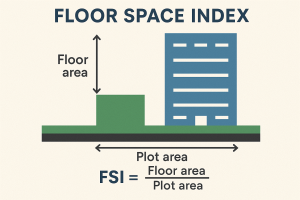
FSI (Floor Space Index), also known as FAR (Floor Area Ratio), is the ratio of a building’s total floor area to the size of the plot on which it is constructed. It determines how much construction is legally permissible on a plot of land.
Formula:
FSI = Total Built-up Area / Plot Area
For example, if the FSI is 2 on a 1,000 sq. ft. plot, the total permissible construction area would be 2,000 sq. ft.
In Mumbai and other cities of Maharashtra, FSI is tightly regulated and significantly impacts project feasibility, pricing, design, and profitability.
What Are the New FSI Rules in Maharashtra 2025?
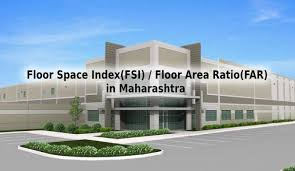
The new FSI rules in Maharashtra 2025 aim to bring uniformity, transparency, and scalability across the state. Here are the key highlights:
- Uniform Base FSI Across Cities: Urban areas will have a base FSI of 1.10 to 1.30 depending on population density.
- Increased Incentive FSI for Redevelopment: Especially in Mumbai suburbs, Thane, and Navi Mumbai, where cluster redevelopment is encouraged.
- Fungible FSI Inclusion: Developers can purchase additional FSI by paying a premium, also known as premium FSI rate in Mumbai.
- Transit-Oriented Development (TOD): Increased FSI near Metro and Railway corridors (up to 4.0 in select zones).
- EWS Housing Priority: Higher FSI for projects offering 20-25% housing units for economically weaker sections.
- Digital Permissions: Integration of FSI calculator Mumbai tools into online building plan approval systems.
How to Calculate FSI for Redevelopment Projects in Maharashtra?
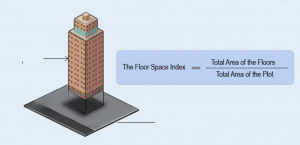
Redevelopment projects often receive additional FSI incentives. To calculate FSI for redevelopment:
Steps:
- Identify Base FSI: Varies from 1 to 1.33 depending on the city and zone.
- Add Fungible FSI: You can purchase up to 35% additional space.
- Add Redevelopment Incentives: Government may offer an extra 50-70% FSI for slum or cluster redevelopment.
- Apply Road Width Criteria: Wider roads allow for higher FSI.
- Use an FSI Calculator for Accuracy.
Example:
If you are redeveloping a 1,000 sq. ft. plot in a Mumbai suburb, with base FSI 1.33, 35% fungible FSI, and 50% redevelopment bonus:
- Total FSI = 1.33 + 0.47 (fungible) + 0.67 (incentive) = 2.47
What Role Does Road Width Play in Determining FSI in Mumbai?
The road width FSI Mumbai criteria are critical in high-density areas:
- 9m Road Width: FSI up to 1.33
- 12m Road Width: FSI up to 2.0
- 18m+ Road Width: FSI up to 3.0 or higher under TOD norms
Projects abutting narrower roads face limitations in vertical construction, while wide-road properties attract premium rates due to higher permissible FSI.
What Are the New FSI Rules in Pune?
The new FSI rules in Pune mirror state-level reforms but include special provisions:
- Base FSI: Ranges between 1.0 to 1.5 in residential zones.
- Metro Corridors: Up to 4.0 FSI allowed within 500m of a metro station.
- Slum Redevelopment Projects: Up to 3.0 FSI offered.
- Tech Parks & IT Zones: High FSI permissible, up to 5.0 in some cases.
The emphasis in Pune remains on transit-oriented growth and sustainable urban expansion.
How Does Fungible FSI Work and What’s an Example?

Fungible FSI refers to additional floor space that developers can purchase over and above the permissible FSI, often used for amenities like flower beds, lobbies, decks, etc.
Fungible FSI Calculation Example:
- Base FSI: 1.33
- Fungible FSI Limit: 35% of base FSI = 0.47
- Total FSI with Fungible: 1.33 + 0.47 = 1.80
Developers must pay a premium FSI rate in Mumbai, which varies by locality and project type. This payment is made to the municipal authority or planning body.
What Is the FSI in Mumbai Suburbs Today?
The FSI in Mumbai suburbs is more liberal compared to South Mumbai due to increased focus on decongestion and affordable housing.
- Base FSI: 1.33
- Fungible FSI: Up to 35%
- Redevelopment FSI in Mumbai suburbs: Up to 3.0 (slum/cluster redevelopment)
- Metro/TOD Corridors: Up to 4.0 FSI
This increase supports larger layouts, vertical development, and improved infrastructure in suburbs like Mulund, Kandivali, and Chembur.
How Is Premium FSI Calculated in Mumbai?
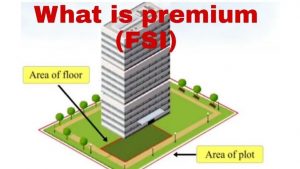
Premium FSI rate in Mumbai is calculated as a percentage of the Ready Reckoner rate of land. The rate may differ depending on:
- Property location (South Mumbai vs. Suburbs)
- Land use (residential, commercial, industrial)
- Road width
- Zone classification
Typically, premium FSI can cost between 30% to 60% of the land value per square foot.
Why Are These New FSI Rules Important for You?
Whether you’re a homeowner looking to redevelop your building, an investor seeking high-FSI zones for better ROI, or a buyer who wants to know if a project is legal — understanding these rules is essential. The FSI calculator Mumbai tools available online are now aligned with 2025 guidelines, allowing users to simulate project feasibility with precision.
What Does This Mean for Redevelopment Projects in Mumbai Suburbs?
The redevelopment FSI in Mumbai suburbs presents a golden opportunity:
- Old CHS societies can benefit from more spacious flats
- Builders get more sellable area, hence more profits
- Wider roads and Metro access can now multiply FSI
- Buyers can expect better amenities, towers, and planning
Conclusion
The new FSI rules in Maharashtra 2025 open a new chapter in urban planning. With increased FSI allowances in suburbs, metro corridors, and redevelopment schemes, there is tremendous potential for vertical growth and smarter infrastructure planning. However, the challenge lies in execution and ensuring that increased densities are supported by adequate civic infrastructure.
At Housiey, we help simplify your property decisions by connecting you directly with verified builders — no brokerage, no spam calls, just a transparent and efficient home-buying experience. Whether you’re curious about FSI regulations, premium charges, or project legality — we have all the insights you need.
Also, don’t forget to check out our comprehensive guide on Mahabhulekh — your ultimate digital land records portal in Maharashtra.
FAQs:
With Maharashtra’s real estate landscape evolving rapidly, understanding the latest FSI (Floor Space Index) regulations is vital for homeowners, developers, and investors alike. Whether you are planning a redevelopment project in Mumbai, scouting
for investment opportunities in Pune, or calculating potential built-up area using an FSI calculator in Mumbai, this blog will serve as your complete guide to navigating the new FSI rules in Maharashtra 2025.
In this detailed blog, we break down FSI fundamentals, the impact of road width FSI in Mumbai, city-wise changes, premium FSI rates in Mumbai, fungible FSI calculations, and everything in between.
Also Read:- Home Foundation Types: What Every Buyer and Builder Should Know
What Is FSI and Why Is It Crucial in Real Estate Development?

FSI (Floor Space Index), also known as FAR (Floor Area Ratio), is the ratio of a building’s total floor area to the size of the plot on which it is constructed. It determines how much construction is legally permissible on a plot of land.
Formula:
FSI = Total Built-up Area / Plot Area
For example, if the FSI is 2 on a 1,000 sq. ft. plot, the total permissible construction area would be 2,000 sq. ft.
In Mumbai and other cities of Maharashtra, FSI is tightly regulated and significantly impacts project feasibility, pricing, design, and profitability.
What Are the New FSI Rules in Maharashtra 2025?

The new FSI rules in Maharashtra 2025 aim to bring uniformity, transparency, and scalability across the state. Here are the key highlights:
- Uniform Base FSI Across Cities: Urban areas will have a base FSI of 1.10 to 1.30 depending on population density.
- Increased Incentive FSI for Redevelopment: Especially in Mumbai suburbs, Thane, and Navi Mumbai, where cluster redevelopment is encouraged.
- Fungible FSI Inclusion: Developers can purchase additional FSI by paying a premium, also known as premium FSI rate in Mumbai.
- Transit-Oriented Development (TOD): Increased FSI near Metro and Railway corridors (up to 4.0 in select zones).
- EWS Housing Priority: Higher FSI for projects offering 20-25% housing units for economically weaker sections.
- Digital Permissions: Integration of FSI calculator Mumbai tools into online building plan approval systems.
How to Calculate FSI for Redevelopment Projects in Maharashtra?

Redevelopment projects often receive additional FSI incentives. To calculate FSI for redevelopment:
Steps:
- Identify Base FSI: Varies from 1 to 1.33 depending on the city and zone.
- Add Fungible FSI: You can purchase up to 35% additional space.
- Add Redevelopment Incentives: Government may offer an extra 50-70% FSI for slum or cluster redevelopment.
- Apply Road Width Criteria: Wider roads allow for higher FSI.
- Use an FSI Calculator for Accuracy.
Example:
If you are redeveloping a 1,000 sq. ft. plot in a Mumbai suburb, with base FSI 1.33, 35% fungible FSI, and 50% redevelopment bonus:
- Total FSI = 1.33 + 0.47 (fungible) + 0.67 (incentive) = 2.47
What Role Does Road Width Play in Determining FSI in Mumbai?
The road width FSI Mumbai criteria are critical in high-density areas:
- 9m Road Width: FSI up to 1.33
- 12m Road Width: FSI up to 2.0
- 18m+ Road Width: FSI up to 3.0 or higher under TOD norms
Projects abutting narrower roads face limitations in vertical construction, while wide-road properties attract premium rates due to higher permissible FSI.
What Are the New FSI Rules in Pune?
The new FSI rules in Pune mirror state-level reforms but include special provisions:
- Base FSI: Ranges between 1.0 to 1.5 in residential zones.
- Metro Corridors: Up to 4.0 FSI allowed within 500m of a metro station.
- Slum Redevelopment Projects: Up to 3.0 FSI offered.
- Tech Parks & IT Zones: High FSI permissible, up to 5.0 in some cases.
The emphasis in Pune remains on transit-oriented growth and sustainable urban expansion.
How Does Fungible FSI Work and What’s an Example?

Fungible FSI refers to additional floor space that developers can purchase over and above the permissible FSI, often used for amenities like flower beds, lobbies, decks, etc.
Fungible FSI Calculation Example:
- Base FSI: 1.33
- Fungible FSI Limit: 35% of base FSI = 0.47
- Total FSI with Fungible: 1.33 + 0.47 = 1.80
Developers must pay a premium FSI rate in Mumbai, which varies by locality and project type. This payment is made to the municipal authority or planning body.
What Is the FSI in Mumbai Suburbs Today?
The FSI in Mumbai suburbs is more liberal compared to South Mumbai due to increased focus on decongestion and affordable housing.
- Base FSI: 1.33
- Fungible FSI: Up to 35%
- Redevelopment FSI in Mumbai suburbs: Up to 3.0 (slum/cluster redevelopment)
- Metro/TOD Corridors: Up to 4.0 FSI
This increase supports larger layouts, vertical development, and improved infrastructure in suburbs like Mulund, Kandivali, and Chembur.
How Is Premium FSI Calculated in Mumbai?

Premium FSI rate in Mumbai is calculated as a percentage of the Ready Reckoner rate of land. The rate may differ depending on:
- Property location (South Mumbai vs. Suburbs)
- Land use (residential, commercial, industrial)
- Road width
- Zone classification
Typically, premium FSI can cost between 30% to 60% of the land value per square foot.
Why Are These New FSI Rules Important for You?
Whether you’re a homeowner looking to redevelop your building, an investor seeking high-FSI zones for better ROI, or a buyer who wants to know if a project is legal — understanding these rules is essential. The FSI calculator Mumbai tools available online are now aligned with 2025 guidelines, allowing users to simulate project feasibility with precision.
What Does This Mean for Redevelopment Projects in Mumbai Suburbs?
The redevelopment FSI in Mumbai suburbs presents a golden opportunity:
- Old CHS societies can benefit from more spacious flats
- Builders get more sellable area, hence more profits
- Wider roads and Metro access can now multiply FSI
- Buyers can expect better amenities, towers, and planning
Conclusion
The new FSI rules in Maharashtra 2025 open a new chapter in urban planning. With increased FSI allowances in suburbs, metro corridors, and redevelopment schemes, there is tremendous potential for vertical growth and smarter infrastructure planning. However, the challenge lies in execution and ensuring that increased densities are supported by adequate civic infrastructure.
At Housiey, we help simplify your property decisions by connecting you directly with verified builders — no brokerage, no spam calls, just a transparent and efficient home-buying experience. Whether you’re curious about FSI regulations, premium charges, or project legality — we have all the insights you need.
Also, don’t forget to check out our comprehensive guide on Mahabhulekh — your ultimate digital land records portal in Maharashtra.
FAQs:






